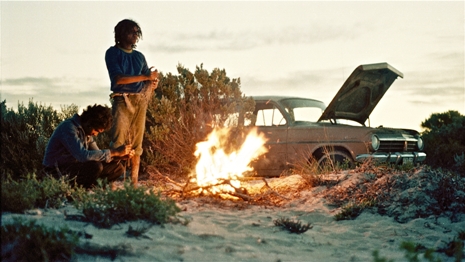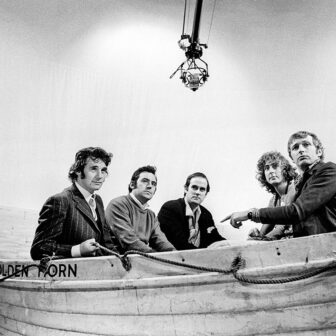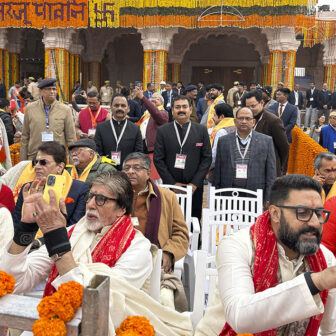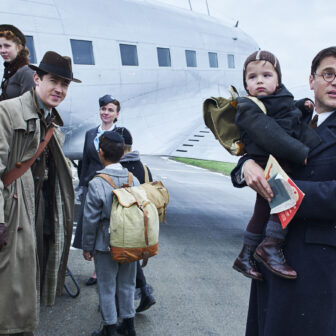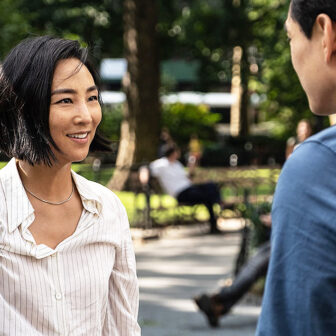FILM festivals are many things, not least moments of agreeably chaotic social life in the queues at the George Street complex and the foyers of the State. (“Great to see you, we must catch up” – and they probably won’t, or not till next year.) Increasingly, spaces are made to think about cinema as well as taking it in; but in the always expanding audience, as the whole event gathers cachet, there are those who don’t allow for the intellectual dimension; they just want more and more of the movies. At this year’s excellent retrospective of British film noir in the art gallery’s theatre, the guest curator, Quentin Turnour of the National Film and Sound Archive, was busily telling us about Joseph Losey’s Time without Pity when someone in the second row heckled: cut it short, he said, let’s get on with the movie. Quentin battled on – and in that particular session, his offering of film history was arguably more important than the film. The best thing in that series was the superb new print of Carol Reed’s Odd Man Out (1947) in which the young and beautiful James Mason plays a doomed Irish rebel on the run; and such excellent items as Val Guest’s Hell Is a City (1960) and Peter Yates’ Robbery (1967) showed us again that the undeservedly forgotten Stanley Baker was one who really understood the subtleties of screen performance. Robbery, for the record, takes off with one of the best car chases in memory.
The retrospective strands and moments are among the best things any festival can give us, particularly in a city without a real cinematheque. So we were given back Hitchcock’s Rear Window, which some would place above the much applauded Vertigo as the old master’s very best; and then, for one quite uproarious evening, the refreshed print of the best Australian film of 1981 and indeed of many other years, Wrong Side of the Road. Along the boundary between documentary and drama, this work of thirty-two years ago is stunningly new and alive. Two Aboriginal bands, Us Mob and No Fixed Address, take to the South Australian roads. They find welcome in extended-family houses, and aggressively racist exclusion in a pub they planned to play in; they do hard rock and reggae and song, and play for an Aboriginal dance where the cops assemble outside, determined to find trouble where in fact there may be none. One musician, a young man once adopted by white parents, uses the trip to try tracking down his birth mother. Another, pale-skinned, deals with advice from a cop to keep clear of those no-good black folks. A girlfriend waits outside a jail, and once inside, tries to deal with the suspicion and unease of the young man behind bars. All this was filmed, with actors playing out roles close to their own life stories, years before the royal commission into black deaths in custody, before Paul Keating’s landmark Redfern Park speech of 1992, before we began speaking about stolen generations.
On 14 June Wrong Side of the Road packed out one of the larger George Street cinemas, and the responses – especially from younger people who’d never heard of it – were wild, and some of them couldn’t believe it wasn’t made yesterday. The producer and director, Graeme Isaac and Ned Lander, with the survivors from their cast, met a new audience, along with quite a lot of us from the first time around. This film, said Ned Lander cheerfully, “is rough as bags.” True, and the roughness is its life. I remembered how in 1981 some of us, bloody-minded as we were, had a good time explaining to our students why we held it a better film than that year’s too much revered, tasteful, conformist Gallipoli.
Among the festival’s old hands, there are some who don’t care for the way the event has changed; they think it’s lost an element of idealism, and they believe too that the main program should be more clearly dominated by non-commercial films which won’t find outlets otherwise. That was the story once, when the festival was a struggling enterprise in tiny temporary offices, with a voluntary committee and paid employment for part of the year only; Sydney’s culturati held cinema in comparatively low regard, and for the distribution–exhibition trade the festival was suspect, likely to deplete their audiences. Over time and against predictions, it has become a solidly grounded institution with a board of directors, a small permanent staff and a whole (very congenial) army of advisers and volunteers; not-for-profit, depending on government and corporate sector partnerships, and an entirely co-operative relationship with film trade and industry. Potently too, the event has unquestionable glamour, with beautifully designed bunting all over town, and a widespread sense that it’s not to be missed, even if you make it to only a few of the principal offerings.
Many of the mainstream features, both in competition and out of it, were in effect previews of films likely to get commercial release before too long, and this has drawn the criticism that the festival is now – as I heard it said – “only part of the market.” But that can be contested; outside the headline list, the program extended into a great range of documentary, short films, animation; there was room for bizarre and disturbing items like The Act of Killing and The Search for Emak Bakia; there were all the music films, taking up every genre from rock, postpunk and bluegrass to the Warumpi Band in Steven McGregor’s Big Name No Blanket, and then, far across the musical universe, the splendid Becoming Traviata; there were talks, workshops and industry masterclasses. A special section (Screen Black) was given to the work of Indigenous film-makers, and the question arises: after the wide ground broken in recent years by the works of Warwick Thornton, Beck Cole and Ivan Sen, should these films be taken as parts of mainstream Australian production? Everyone should get a look at Dylan McDonald’s Buckskin, the first film I know of to take up the issue of threatened Aboriginal cultures and languages. Buckskin won the prize for documentary; the competition was stiff, with Big Name No Blanket in the contest, and Juliet Lamont’s truly lovely Miss Nikki and the Tiger Girls, on the first girl band in a rapidly changing Burma (and thanks to the program writers for not calling it Myanmar.) Another in that lineup, the regaling WikiLeaks documentary We Steal Secrets, should come soon to your local cinema.
There were too many films I didn’t see, and a few choices I regretted; but my only real problem with the festival is the impossibility of being in more than one cinema at a time. Two documentaries in particular demand the widest circulation: Ken Loach’s The Spirit of ’45, and Andreas Moi Dalsgaard’s The Human Scale, on the way we use urban spaces and don’t, and the liberating ideas of Danish urban planner Jan Gehl. Dalsgaard and Gehl survey the globe, from the desperate worlds of Dhaka to Copenhagen and post-earthquake Christchurch, Times Square in New York, the laneways of Melbourne; and they’d love to fix Sydney. The general idea is to make cities into places for humans, and put all those cars somewhere else. If this excellent film returns, I’ll write more about it; and also, I hope, about Ken Loach’s historical essay on Britain’s postwar Labour government. Loach looks back to the distant day, nearly seventy years ago, when there were political leaders who thought the end of the war should necessarily mean the end of rockbottom poverty, the provision of healthcare, schooling and housing; they had some quaint outmoded ideas about social justice, and went to work accordingly on transforming Britain. This film is fierce, vivid, heartfelt, using archival film brilliantly to its purposes. I wasn’t the only one who said that every political and civic leader in this country should be chained in their seats and made to watch it, twice.•
